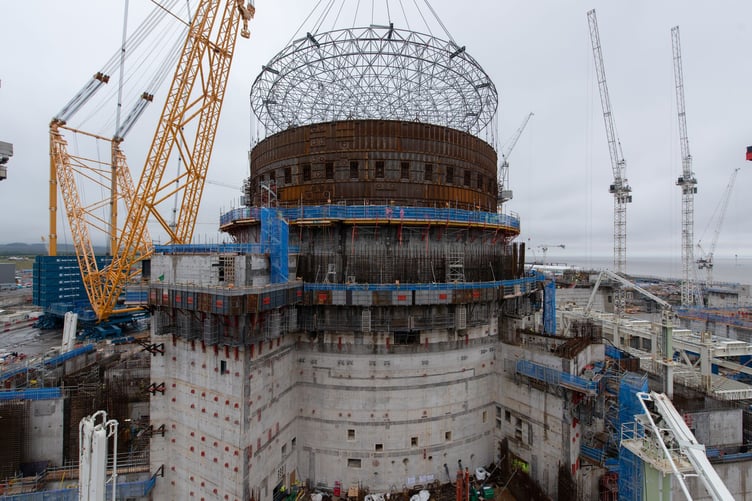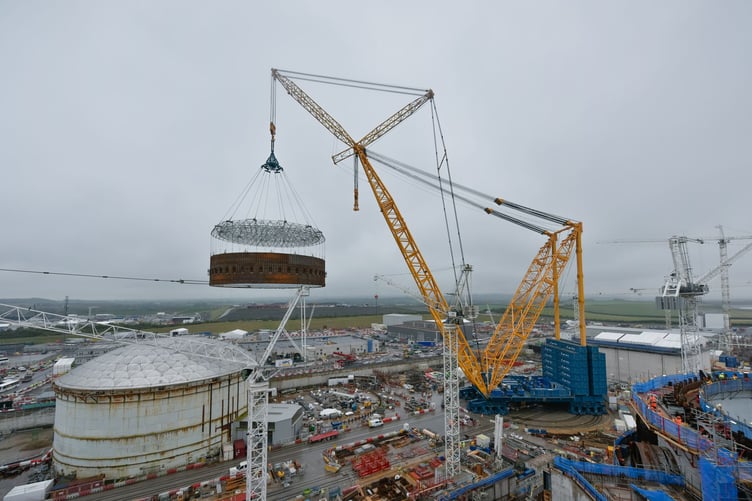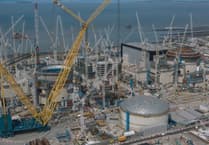A THIRD and final liner ring has been placed into position in Hinkley Point C’s second nuclear reactor building.
Engineering teams lifted the 423-tonne steel liner into place on Monday afternoon (October 14) using the world’s largest land-based crane Big Carl.

The Sarens giant crane Big Carl stands 820 feet tall, taller than London’s Canary Wharf buildings, and can lift loads of 5,000 tonnes.
It has been on the Hinkley site since 2019 and by the time all 50 buildings of the nuclear power station are completed it will have lifted more than 700 of the heaviest components for the reactor units.
Reactor building two’s steel ring is 38 feet in height and 154 feet in diameter and forms part of the inner containment wall which will now be encased in two layers of concrete.
The liner ring was prefabricated in a factory on site and also features supporting brackets for the internal polar crane beam which will rotate 360 degrees above the reactor and be used for refuelling.
Only the building’s ‘lid’ now remains to be placed on top, with the dome lift scheduled for next year.
Hinkley C’s first reactor building was capped with its own dome last December and is ready for the reactor to be installed before the end of this year.

A spokesperson for Hinkley owner EDF said: “Big Carl’s latest lift highlights the progress being made at Hinkley Point C.
“Teams are using the learnings from building the first reactor unit to achieve efficiencies typically of between 20 per cent and 30 per cent on unit two.”
Hinkley C will supply clean, homegrown energy to six million homes, and is seen as crucial in helping the UK avoid further energy crises.
During its 60-year operating life it should meet up to seven per cent of the country’s energy demands.
However, the development has been plagued with construction and funding issues which means it could open up to six years late.

Hinkley’s EPR reactors are based on EDF’s Flamanville-3 nuclear power station which has just started operating in Normandy, France.
But UK regulators required 7,000 design changes for Hinkley C’s reactors, including the instrument control system and smaller, minor alterations which together added up to what EDF said was ‘a significant amount’.
EDF said it also meant between 25 per cent and 30 per cent more steel and concrete was needed for Hinkley C than for the construction of Flamanville-3.
It was granted planning permission in 2013 when it was expected to be opened by 2025, but an EDF review earlier this year revealed it could be 2031 before the first reactor starts generating electricity, although the company said that was a worst case scenario and it was more likely to be 2029.
Hinkley C is currently the largest construction site in Europe with a workforce of up to 10,000 people working on it at any one time, although EDF said it might increase to 12,000, more than double the originally agreed figure of 5,600.




Comments
This article has no comments yet. Be the first to leave a comment.